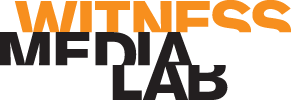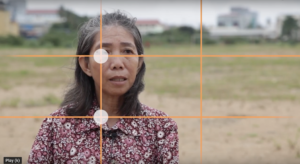Published January, 2020 by Jackie Zammuto in Legal Video Advocacy
Production Tips for Legal Video Advocacy Projects
Below are tips, suggestions and resources for advocates, filmmakers and legal teams to help simplify your legal video advocacy production process.
Pre-Filming
- The more preparation, the better – research, build rapport, determine the story structure and be willing to adapt as needed. Preparation will also streamline the editing process and reduce the time spent on post-production. Learn more about developing a story structure here.
- Building trust with your client and interviewees is crucial! Make sure there is time to connect and listen. Be open and non-judgemental.
- Developing solid interview questions is an important part of the pre-production process!
- If possible, send the interviewee the questions in advance.
- If you are concerned about the interviewee sounding too rehearsed, send them a list of talking points you want them to touch on instead of the questions.
- Use the Video Action Plan to help develop a strategy and story arc.
- Before the interview, establish clear roles for the legal team and the filmmakers. Determine who is going to lead questions, and when it’s okay to ask follow up questions or step in.
- Filmmakers can serve as a good soundboard for the legal team – help clarify the story arc + interview questions as needed.
- Does the client or interviewee need translation? How can you accommodate this?
- Prisons may need equipment lists sent at least one month in advance of filming (be as detailed as possible)
- You will likely be limited in what spaces you can film (i.e the room might be noisy) so plan accordingly
- You may be limited in how much time you can spend with a client, plan accordingly.
- Think about how you will access family/childhood photos – ask your client to bring them to the interview.
- When possible, help your interviewee determine what to wear (if they have options). Make sure they choose something they feel comfortable in (try to avoid stripes and busy patterns)
Filming
- Two camera interviews are best when possible
- Try to utilize a natural light source or bring additional lighting
- Consider using the “Rule of Thirds” to frame your interview
- Filmmakers, you should follow the legal team’s lead with the client and prison staff
- During the interview, remember to use non-verbal cues of support (i.e. stay quiet, nod your head, give a thumbs up, etc.)
- Ask your interviewee to incorporate the question into their answer. Let them know that the audience won’t hear you asking the questions.
- Example: “If I ask you what you had for breakfast today, please respond ‘for breakfast today I ate cereal and a banana’ instead of ‘cereal and a banana’.”
- Redirect your questions when necessary or you need the interviewee to touch on a specific point in different ways
- Remember these guiding posts – we’re not here to “fix” anyone. Be a calm, supportive, safe, non-judgemental presence
- Remember, the video is meant to be short (ideally 5 minutes or less). Don’t film excessively. Be strategic.
- Don’t forget to capture room tone after you’re done with the interview
Editing Considerations
- Transcribe the footage if possible!
- Rev.com – not free, but very reliable.
- Descript.com – cheaper than Rev.com. You can also get a student or nonprofit discount
- Temi.com – 10c/minute
- Trint.com – hourly/monthly options
- Otter.ai – up to 600 minutes free per month
- Sonix.ai – free trail, can export directly to Premiere!
- Inqscribe.com – free version available, this doesn’t transcribe for you, but makes the process a lot easier
- Editing software suggestions
- iMovie – basic, free for Mac devices
- DaVinci Resolve – more advanced, but still easy to use. Has a free version!
- Adobe Premiere Pro – subscription for about $20/month
- Adobe Premiere Rush – similar to Pro but fewer bells and whistles, good for basic editing, about $10/month
- ClipChamp– offers free and monthly versions from $6 – $27/month
- Archival Footage/Music
- Internet Archive – a non-profit digital library offering free universal access to books, movies & music, as well as 406 billion archived web pages.
- In general we don’t encourage the use of background music because it can be distracting and manipulative, but if you do find a way to ethically incorporate music, search freesound.org
- Do a paper edit! This video shows how to do a full paper edit. If you don’t have the time or resources for this, you can apply the same principles using a shared or Google doc
- Make sure there is clear communication with everyone involved about expectations and timelines. Avoid having too many cooks in the kitchen – have a plan.
- Try to minimize lots of back and forth about what should stay and go.
- Anticipate about 4 rounds of edits
- Dropox and the Vimeo Annotation Tool can be a useful way to gather feedback directly on the video
- Research places for archival footage for b-roll, here are some ideas.
- Will the film need subtitles or captions?
- Will you try to show the client any cuts? If so, think about access (usually have to burn DVDs to show in prison)
- Proofread your text cards!
Additional Resources


